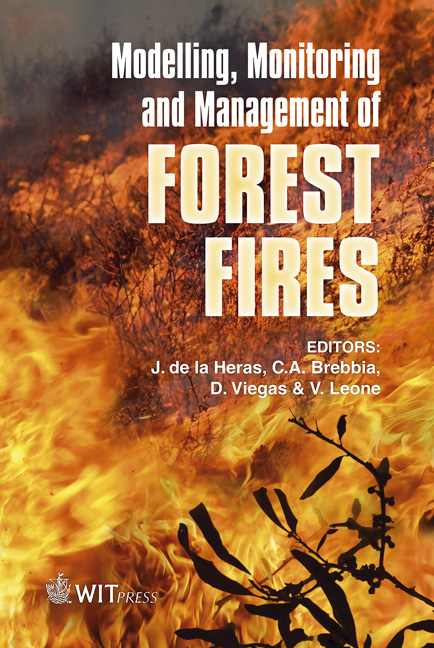Scientific Advances In Fire Modelling And Its Integration In A Forest Fire Decision System
Price
Free (open access)
Transaction
Volume
119
Pages
8
Page Range
31 - 38
Published
2008
Size
646 kb
Paper DOI
10.2495/FIVA080041
Copyright
WIT Press
Author(s)
L. Ferragut, S. Monedero, M. I. Asensio & J. Ram´ırez
Abstract
At present, there exists a wide range of fire behavior models and studies aiming to simulate fire. Nevertheless there is still an important gap between the scientific research in this field and its practical use by fire fighting agencies. In this work, we intend to narrow this gap by the introduction of a fire combustion model integrated within an easy to use GIS environment aiming to give real and practical solutions for fire fighting agencies. The present paper focuses on the combustion model fire behavior implementation carried out in this GIS platform. Combustion models describe the evolution of physical quantities inside of the vegetation, considered as a porous medium, and as a consequence provide the evolution of the fire front. Between combustion models we can distinguish two groups: 1) Complex models, where general conservation laws are considered and several phases, solid phase and gas phase with different temperatures, two layers model, etc. 2) Simplified models, where in general an average media is considered with average magnitudes. Usually only one temperature is considered and only one phase (the other phase is parameterized). The simplified models are more realistic than models based on cellular automata, geometric models and other empirical models, but allow faster computations than complex models. The models in this work takes into account the main mechanisms in fire spread: Water content, Radiation, Wind and topography effects. Concerning the final GIS product. It is part of the European Eurorisk-Preview project (Geo-information services for risk management on a European level), and offers the following useful services: 1) Access to long lasting layer information: High definition fuel types, terrain, fire breaks (rivers, roads, highways, etc). 2) Access to real time web based updated layer information: Meteorological wind, moisture content of the terrain. 3) Rothermel based fire simulator. 4) Combustion fire behaviormodel. 5) High DefinitionWindModel. All integrated within an easy to use environment, 3D mapping, and easy inputs and outputs in all standard formats. Keywords: forest fires simplified models, moisture, multivalued operator, non local radiation, local radiation, GIS implementation.
Keywords
forest fires simplified models, moisture, multivalued operator, non local radiation, local radiation, GIS implementation.





